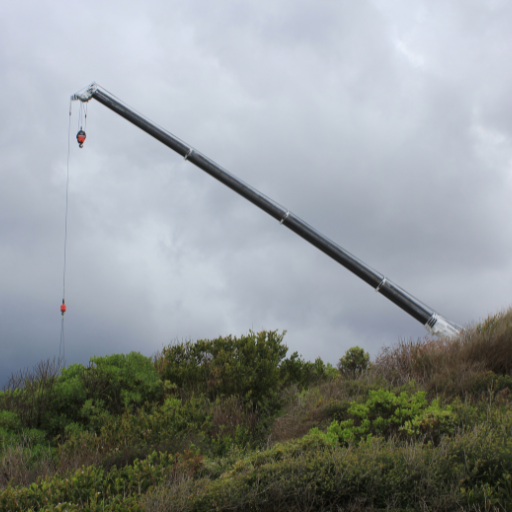Mobile Cranes Lightning Safety
When lightning strikes, you don’t want to be near a mobile crane, let alone operating one.
Contrary to popular belief, it’s not the metal on mobile cranes that attracts lightning strikes. According to the National Weather Service, lighting seeks high and isolated shapes – let’s state the obvious: high and isolated – like a mobile crane.
Lightning is dangerous for crane truck operators because metal is a conductor of electricity. A lightning strike might take out the electrical system in the crane and kill anyone unfortunate enough to be in the path of the electrical current. Most mobile cranes are not outfitted with the lightning rods commonly found in tower cranes.
Here’s what you need to know about lightning safety for mobile cranes:
Always watch the weather before you start work on a mobile crane. You can check weather forecasts on weather apps (like The Weather Network) or radio, but it’s also wise to scan and watch the skies because you might notice changes before the weather forecasters report them. If you see dense, dark clouds gathering and the wind picking up, that’s often a sign that a storm is rapidly approaching. And you don’t have to have rain to have lightning strikes! If you hear thunder, operating a mobile crane is not safe.
Set notifications to warn of lightning. It’s possible to get so engrossed in your work that you’ll miss the signs of a lightning storm until it’s too late. You can set phone weather apps to deliver notifications for specific conditions. There are also portable lightning detectors that are surprisingly inexpensive. For less than $50, Acurite sells a portable lightning detector that will alert you to lightning bolts and storms within a 25-mile radius with a warning light, audible alarm, and a text alert.
Shut down the crane if you see lightning or hear thunder. It’s highly probable that if you can see lightning or hear thunder, a storm is close enough that lightning could strike the job site. Protect your team from injury (and avoid having to make an insurance claim for liability). Lightning may still strike unmanned equipment, but the crane truck is replaceable. Carefully land any loads, lower the booms of mobile cranes, cut power, and leave the equipment secure.
- Seek safe shelter during a thunderstorm. Nobody should remain outside because metal objects (like fencing or machinery) attract lightning – and so do open fields, tall trees, and bodies of water (even large puddles!). The best shelter is inside a permanent building. Temporary shelters like tents or sunshades are not safe. A hard-topped vehicle is a second safe choice as long as the windows are closed. Everyone should remain sheltered in place until at least 30 minutes after the last thunderclap.
- Do a safety check before resuming work after a thunderstorm. Weather experts caution to wait roughly half an hour after the last sound of thunder before resuming work with heavy equipment on a job site. It’s better to be sure a storm has ended or moved away than to risk resuming work and encountering a second phase of a storm. Be sure to conduct a visual inspection of the mobile crane and other equipment in case there was damage during a storm. Crane operators report that lightning often damages electronics. If there are any signs of damage, consult the manufacturer’s recommendations before you resume work on the job site.
When lightning strikes, you can count on our insurance specialists for help with claims. At New Heights Insurance Solutions[KMC5], we offer specialized insurance coverage for crane rental operators.

